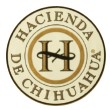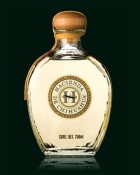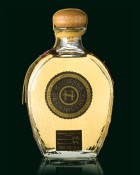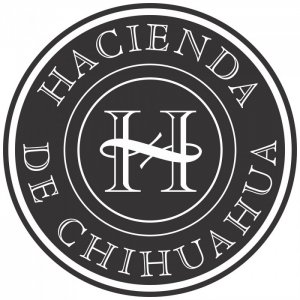 Tequila.net recently had the extreme pleasure of visiting the land of Sotol, Chihuahua, Mexico. The state marked for the death of two of Mexico's most prominent male figures; founding father Priest Miguel Hidalgo and revolutionary leader Francisco (Pancho) Villa, is also the beautiful land of the Copper Mountains and Canyon. The majestic Copper Canyon, estimated to be 8 times bigger than the Grand Canyon, is also home to the Tarahumaras; the indigenous people who still live under their ancient laws and customs. Rich in history, geography, and culture, it should come as no surprise that in the vast deserts of Chihuahua, lies one of Mexico's best kept Agave treasures; a wild Agavacea species scientifically known as 'Dasylirion'. Over 800 years ago, the local indigenous people discovered the magical intoxicating properties of this wild Agave plant. Centuries later we are presented with the distinguished super premium spirit called Sotol.
Tequila.net recently had the extreme pleasure of visiting the land of Sotol, Chihuahua, Mexico. The state marked for the death of two of Mexico's most prominent male figures; founding father Priest Miguel Hidalgo and revolutionary leader Francisco (Pancho) Villa, is also the beautiful land of the Copper Mountains and Canyon. The majestic Copper Canyon, estimated to be 8 times bigger than the Grand Canyon, is also home to the Tarahumaras; the indigenous people who still live under their ancient laws and customs. Rich in history, geography, and culture, it should come as no surprise that in the vast deserts of Chihuahua, lies one of Mexico's best kept Agave treasures; a wild Agavacea species scientifically known as 'Dasylirion'. Over 800 years ago, the local indigenous people discovered the magical intoxicating properties of this wild Agave plant. Centuries later we are presented with the distinguished super premium spirit called Sotol.
With its own origin of denomination, Sotol is similar to Tequila only in that it is a distilled spirit of Mexico. Pioneering the global production of this super premium spirit is an ambitious and sophisticated company by the name of Vinomex. Headquartered in Chihuahua City, in the state of Chihuahua, Mexico, Vinomex proudly produces Sotol Hacienda de Chihuahua (HDC). The company's roots date back to the early seventies when Mr. Enrique Elias Muller opened a distillery in Las Delicias, Chihuahua to produce Brandy. At that time he hired Master Enologist Jose Daumas Gil de Partearrollo. After a successful run in the Brandy business, the company redirected. In the early nineties under the management of Mr. Muller's sons, Vinomex ventured into the Tequila world with a redefined strategy. A strategy that would require Dr. Daumas to create a unique Spirit that could compete with top rated Tequilas. He turned to the ancient plant with magical intoxicating properties.
With scarce information and few points of reference to follow in the production of Sotol, Dr. Daumas put forth a tremendous amount of work and effort to come up with an elaborate, effective production strategy. He personally traveled throughout Chihuahua, hand harvested plants, took them home, slow cooked, fermented, and aged them until he arrived at the ultimate process for production. Among the many obstacles Dr. Daumas had to overcome, were the details of finding and harvesting the three Dasylirion varieties used to produce Sotol.
Extensive satellite and aerial studies were done to identify the areas in which these wild Agave plants grow in abundance. Permits must be secured from the Mexican Government to harvest in a specific region; a complicated step that can take at least six months to complete for a single permit. In an effort to preserve the land and maintain continuity with nature, each plant harvested is replenished by two younger ones grown at the distillery nursery, left to mature and grow in the wild. In addition, at least 30% of the wild plants are left untouched. Unlike the Blue Weber Agave used for Tequila, the Dasylirion does not reproduce from hijuelos (shoots from the base of the plant), rather it germinates from the thousands of seeds produced by it's quiote (flowering stalk). Unfortunately, in the dry desert of Chihuahua, the incidence of natural germination can be scarce due to the frequent lack of moisture. Vinomex maintains an aggressive germination process with a 98% success rate, ensuring the preservation and survival of this unique Agave.
It takes approximately 12-15 years for each plant to mature to its ultimate state. The age of the plant is determined by size, thorns and the marks left by each quiote. The Dasylirion flowers approximately twice a year and does not require the quiote to be cut down to keep it from dying; another distinct difference between it and the Blue Weber Agave. Vinomex runs its harvesting segment of production in the winter months when the plants are under the least amount of stress from heat. For reasons still unknown, this is the only time of the year that successful fermentation can take place. These plants survive extended periods of drought and harsh desert conditions. Only the strongest and healthiest survive, thus a natural selection process. As a result, the plants used for HDC are hardy and rich in natural flavors and sugars. After harvesting, the Agave is slow cooked for at least 72 hours at an average of 100 degrees Celsius in clay ovens and crushed to extract every drop of the aguamiel. The aguamiel is then fermented for at least 3 days with champagne yeast and distilled in a double column copper still. New French Oak barrels are used for aging HDC's Reposado and Añejo. Vinomex commits one full plant per single bottle of Sotol HDC.
Accompanying us on our distillery visit was Ing. Jesus Rodriguez, General Director of the 'Consejo Mexicano del Sotol A.C.', the official Sotol Regulatory Council. The council protects the origin of denomination for Sotol in the states of Chihuahua, Coahuila and Durango so that it may only be produced and bottled in one of these three states. As noted by Mr. Rodriguez, the council is working diligently with smaller producers to follow every pre-requisite of Sotol's NOM-159 to produce a high quality spirit. A task already accomplished by Vinomex. The consumer can expect no less than a superb quality, 100% pure Agave spirit in Sotol HDC.
In the center of the distillery rest several massive 10,000 liter barrels, remnants of the Brandy years. Although it was the end of the production season, workers could still be seen cleaning, sweeping and wiping down railings. The grounds inside and out are rustic, clean, and nostalgic. Well kept and well guarded by Otto and Balak, two, according to Dr. Daumas, very docile Rottweilers. We of course, took his word for it! Among the many highlights, was the opportunity to preview two delicious Sotol creme blends and a sample of Sotol HDC's 5 Year Extra Anejo, straight from the barrel. Wild, smooth, and elegant, due to hit the shelves in the near future. Dr. Daumas meticulously oversees every aspect of production. His articulate, yet humble approach is a reflection seen throughout Vinomex. There is a strong sense of pride, family and a true passion for Sotol. Having paved the way and come full circle in the production process with their conservation efforts, Vinomex has created a tough act to follow. By the end of our visit, it was easy to see why Sotol Hacienda de Chihuahua continues to receive rave reviews by true Agave connoisseurs.



For more information visit: www.SOTOL.com














